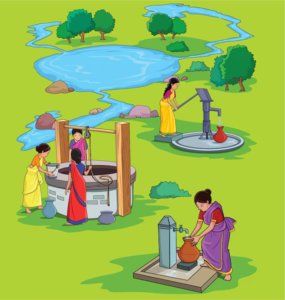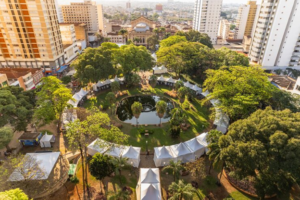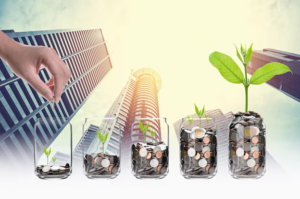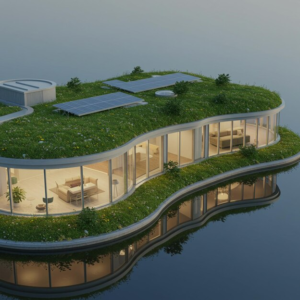If you’ve been keeping an eye on how homes are being built these days, you’ve probably noticed things are shifting in a pretty exciting direction, eco-friendly homes aren’t just a trend anymore; they’re becoming the new normal, and people everywhere are loving the idea of living in a way that’s better for the planet and often better for their wallets too.
You don’t have to live in a fancy treehouse or some futuristic pod in the middle of the woods to embrace sustainable living anymore, because these days, eco-conscious design has gone mainstream and you’ll find all kinds of sustainable features in homes popping up in cities, suburbs, and even in tiny towns all across the country.
What’s really cool is that sustainable living isn’t just about the building materials or how much energy you save, it’s about a complete mindset shift, where people are thinking more about how their daily habits impact the environment and what small changes they can make that’ll add up to something bigger over time.
Let’s be honest, ten years ago, the idea of a “green” home probably made people picture solar panels and compost bins and not much else, but now, we’re seeing innovation in every corner of the home, from smart thermostats to recycled insulation to entire neighborhoods designed with sustainability in mind.
So, What Exactly Makes a Home Eco-Friendly?
It’s not just about slapping some solar panels on the roof and calling it a day, even though that’s definitely a great place to start an eco-friendly home is built (or renovated) with the goal of reducing its impact on the environment, which means everything from the materials used during construction to the energy systems, water usage, waste management, and even the location of the home can play a role in how green it is.
For example, some homes are built using recycled or reclaimed materials like wood from old barns, bricks from demolished buildings, or even recycled steel beams, which helps reduce the demand for virgin materials and keeps usable stuff out of landfills.
Then there’s insulation something people don’t often think about unless they’re freezing or sweating in their homes but good insulation is a major player in making a house more energy efficient, and there are now eco-friendly options like sheep’s wool, cellulose (made from recycled newspapers), and even denim insulation, which, yes, comes from old jeans.
Let’s not forget about windows, because poorly sealed or single-pane windows can waste a ridiculous amount of energy, but energy-efficient windows with multiple panes and special coatings are a game changer when it comes to keeping the heat in during the winter and out during the summer.
Energy Efficiency Is the Heart of Eco-Living

If there’s one thing that really defines an eco-friendly home, it’s how well it uses energy and by “well,” we mean how little it needs to do the job of heating, cooling, lighting, and powering your daily life.
More and more people are installing solar panels not just because they look cool and futuristic (though they kind of do), but because they can seriously cut down on energy bills and even allow homeowners to generate their own electricity, sometimes even selling it back to the grid.
Smart home technology is also making a huge impact here. Things like smart thermostats, lighting systems, and appliances can learn your habits and adjust automatically to reduce wasted energy, which not only helps the planet but can also help you save money in the long run.
Some homeowners are even going a step further and building what’s called a “net-zero” home, which means the house produces as much energy as it uses over the course of a year, thanks to solar panels, airtight construction, and ultra-efficient heating and cooling systems.
Water Conservation Is a Big Part of the Picture

Saving water isn’t just about turning off the tap while you brush your teeth anymore, it’s about designing your entire home to use water more wisely, from low-flow showerheads and dual-flush toilets to rainwater harvesting systems and drought-tolerant landscaping.
Many eco-friendly homes now include greywater systems, which collect the relatively clean wastewater from sinks, showers, and laundry and reuse it for things like flushing toilets or watering the garden, which is a super smart way to cut down on freshwater usage.
Speaking of gardens, landscaping is another area where we’re seeing major shifts. People are swapping out thirsty lawns for native plants that require less water, don’t need chemical fertilizers, and provide habitats for local wildlife, which is a win-win for the environment and your weekend to-do list.
Indoor Air Quality Is Finally Getting the Attention It Deserves

We often don’t think about the air inside our homes unless something smells weird or someone’s sneezing all the time, but indoor air quality is a huge part of sustainable living, especially since we spend so much time inside (even more so these days).
Eco-friendly homes are now being built or upgraded with materials that have low or no volatile organic compounds (VOCs), which are chemicals found in paints, adhesives, carpets, and furniture that can cause headaches, allergies, or worse over time.
Ventilation systems are getting smarter and more efficient too, with things like heat recovery ventilators (HRVs) and energy recovery ventilators (ERVs) that bring in fresh air without wasting energy, which helps keep the air clean and your heating/cooling bills low.
If your home feels stuffy, dusty, or musty even after you’ve cleaned top to bottom, it might be worth looking into something like Air Duct Cleaning Orem getting your ducts professionally cleaned can help with indoor air quality and keep your HVAC system running more efficiently.
The Role of Location and Community in Sustainable Living

It’s easy to think of eco-friendly living as something that happens inside the four walls of your home, but location really matters too if your house is a long drive from work, school, or shops, you’re going to spend a lot of time (and gas) in the car, which isn’t exactly planet-friendly.
That’s why more communities are being built with walkability in mind, with paths, bike lanes, parks, and shared spaces that encourage people to leave the car at home and connect with their neighbors, which, let’s be honest, just makes life more enjoyable anyway.
Some neighborhoods are even experimenting with shared resources like community gardens, tool libraries, and carpooling programs, which not only help the environment but also bring people together and make daily life a little easier and a lot more fun.
Eco-Friendly Upgrades That Don’t Break the Bank

You don’t need to build a brand-new house from scratch or spend a fortune to make your home more sustainable. There are tons of small, affordable upgrades you can make that add up to a big difference over time.
Swapping out old light bulbs for LED ones, for example, is a super easy change that uses way less energy and lasts way longer, and switching to smart power strips can help reduce the “phantom” energy your electronics use even when they’re turned off.
Adding weather stripping around doors and windows is another low-cost upgrade that can make a noticeable difference in how much energy your home uses to stay warm or cool, and using a programmable thermostat helps avoid wasting energy when you’re not home.
Even something as simple as choosing eco-friendly cleaning products can help reduce the number of harmful chemicals in your home and your wastewater, plus they usually smell a whole lot better too.
The Psychology Behind the Eco-Home Movement

There’s something really satisfying about making choices that feel good and do good at the same time, and that’s a big part of why eco-friendly living has taken off the way it has. People want to feel like they’re contributing to a better world, even if it’s just one small change at a time.
It’s kind of like the snowball effect once you start recycling more or cutting down on plastic, you start looking around your home and thinking, “What else can I change?” and before you know it, you’re growing herbs on your windowsill and plotting out a solar upgrade.
And honestly, it feels good to live in a space that reflects your values, that’s healthier for your family, and that maybe inspires your friends or neighbors to make changes too. It’s not about being perfect, it’s about moving in the right direction.
What the Future of Eco-Friendly Homes Looks Like

Looking ahead, the future of eco-friendly homes is only going to get smarter, more efficient, and more beautiful, with designs that blend technology, sustainability, and comfort in ways we haven’t even imagined yet.
We’re already seeing advances like green roofs, which are covered in plants that help insulate the home and manage rainwater, and passive solar design, where homes are oriented and built to naturally stay warmer in the winter and cooler in the summer without relying as much on electricity.
More and more cities are updating building codes to include energy-efficiency standards, which means even homes that aren’t specifically labeled as “eco” will be built better by default, and new homeowners will have access to rebates and tax incentives for going green.
Biophilic design basically, bringing nature inside with more natural light, plants, wood, and stone is also becoming more popular, and it turns out living with more nature around you isn’t just good for the planet; it’s good for your mental health too.
Wrapping It All Up (But Not Really Concluding, Promise)
Eco-friendly homes are no longer just for the off-grid dreamers or the ultra-rich, they’re for regular people who care about their impact, who want healthier spaces to live in, and who are excited about the future being cleaner, smarter, and more sustainable.
Whether you’re building a new place, renovating an old one, or just swapping out your light bulbs and growing some tomatoes on your balcony, you’re part of the movement, and every step counts.
Sustainable living isn’t about being perfect, it’s about progress, creativity, and making choices that align with the kind of world you want to live in, one home at a time.
And who knows, maybe the next time your neighbor comes over to check out your fancy new rain barrel or your lush native garden, you’ll inspire them to start their own eco-home journey too.











More Stories
Seasonal Storage Solutions That Keep Your House Clutter-Free
Seth Tabatznik Shines for Love in New Indie-Folk Single
Can the Arizona Cardinals Bounce Back Against the Dallas Cowboys on Monday Night?